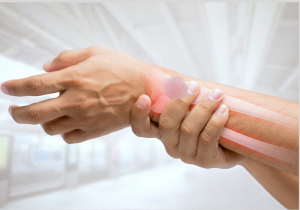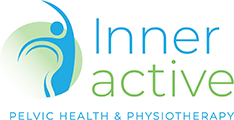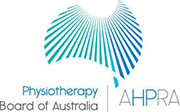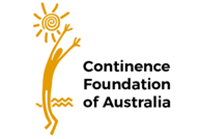
De Quervain’s Tenosynovitis is an inflammatory condition where the tendons on the side of the wrist and base of the thumb become irritated resulting in wrist pain. These tendons travel through a compartment which becomes restricted due to inflammation and thumb and wrist movements are painful.
Postpartum wrist and thumb injuries commonly occur due to hormonal changes that occur during pregnancy into the postpartum stage that increases swelling/fluid retention and relaxes the ligaments which change how tendons and ligaments stretch. It can also occur to new mums as repetitive use of these tendons can cause irritation. This especially occurs as new mums will have to repetitively lift their baby and position their wrist in awkward positions to support the baby’s head when breastfeeding that causing the suddenly increased strain in the tendons of the wrist and thumb.
Signs and symptoms
– Pain at the base of the thumb into the wrist and can refer to the top of the forearm,
– Swelling around base of thumb
– Pain that gets worse with lifting baby at their armpits, turning wrist, pinching or grasping objects
– Reduced movement of thumb due to pain
– Weakness in hand
Treatment
– Avoid repetitive or aggravating movements such as household chores, food preparation, texting/scrolling on phone with thumb, carrying heavy grocery bags. Try to keep your thumb tucked in next to your index finger rather than extended away from your hand.
– Try carrying your baby in different ways to avoid strain and reduce strain on the tendons of your wrist and thumb. Use a pram or baby carrier where possible.
– Wrist and thumb splints under the advice of a physiotherapist or GP. This is to reduce the strain on the tendons and to keep it in a supported position.
– Gentle massage around the base of the
thumb and wrist area, you will be able to feel the tendons and muscles around this area
– Ice packs for 20 mins, 2-3 times a day. The ice is to help reduce swelling, inflammation and may provide pain relief.
– If possible, ask family members for help with daily activities, housework, and caring for your baby.
Physiotherapy
See one of the physiotherapists at Inner Active Pelvic Health and Physiotherapy if your pain continues to persist. We can provide an individualized stretching and exercise program that will progressively overload the tendons to gain strength. We also provide taping support and lifestyle modifications and recommendations to ensure you restore function as soon as possible.
Written By Gaaya
Physiotherapist
References:
Afshar, A., & Tabrizi, A. (2021). Pregnancy-related Hand and Wrist Problems. The archives of bone and joint surgery, 9(3), 345–349. Retrieved at https://doi.org/10.22038/abjs.2020.50995.2531
Földvári-Nagy L, Takács J. Hetthéssy JR, Mayer AA. Szakács N. Szávin-Pósa Á. Lenti K. Treatment of De Quervain’s tendinopathy with conservative methods. Orvosi Hetilap. 2020 Mar 1:161(11:419-24





